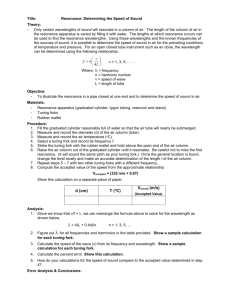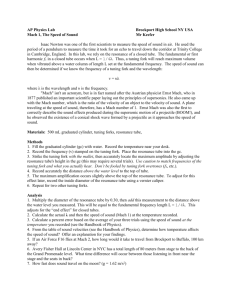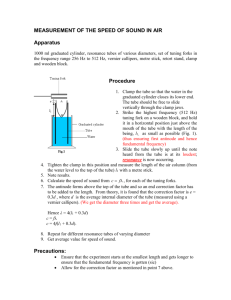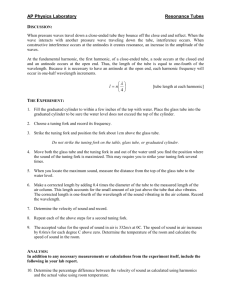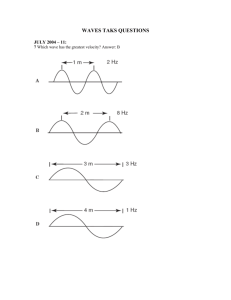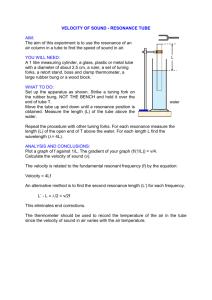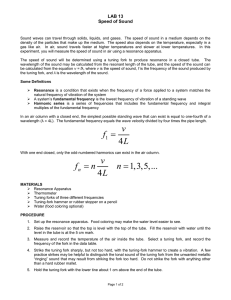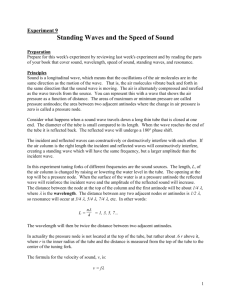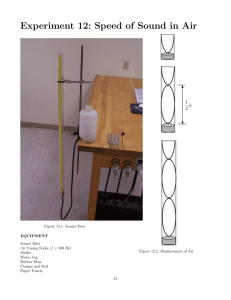Title Measuring the Speed of Sound Using Resonance Abstract This
advertisement
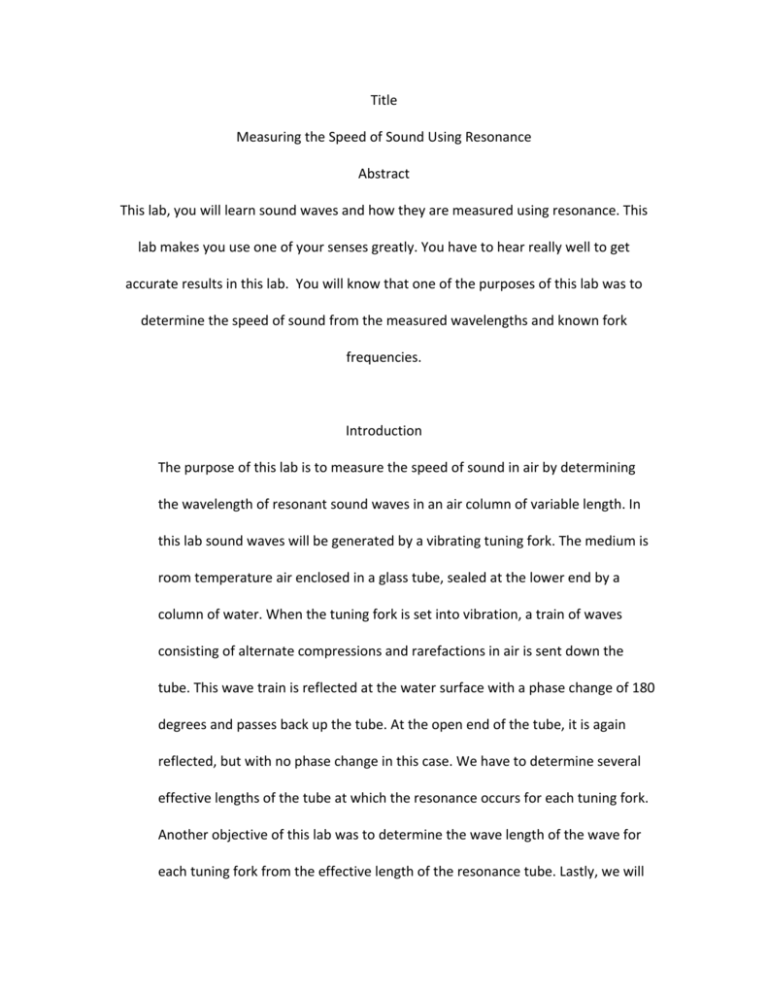
Title Measuring the Speed of Sound Using Resonance Abstract This lab, you will learn sound waves and how they are measured using resonance. This lab makes you use one of your senses greatly. You have to hear really well to get accurate results in this lab. You will know that one of the purposes of this lab was to determine the speed of sound from the measured wavelengths and known fork frequencies. Introduction The purpose of this lab is to measure the speed of sound in air by determining the wavelength of resonant sound waves in an air column of variable length. In this lab sound waves will be generated by a vibrating tuning fork. The medium is room temperature air enclosed in a glass tube, sealed at the lower end by a column of water. When the tuning fork is set into vibration, a train of waves consisting of alternate compressions and rarefactions in air is sent down the tube. This wave train is reflected at the water surface with a phase change of 180 degrees and passes back up the tube. At the open end of the tube, it is again reflected, but with no phase change in this case. We have to determine several effective lengths of the tube at which the resonance occurs for each tuning fork. Another objective of this lab was to determine the wave length of the wave for each tuning fork from the effective length of the resonance tube. Lastly, we will compare the measured speed of sound with the accepted value. My hypothesis is that the larger the frequency of the tuning fork, the lesser distance of the sound at its highest point Methods The materials needed for this lab was a tube, multiple tuning forks, and water. We started off by filling the cylinder with water. Then we lowered the tube all the way into the water. My partner then struck the tuning fork on a piece of rubber and held the vibrating ford over the top of the tube. We then slowly pulled the tube out of the water listening for the position of loudest sound. After finding the antinode we measured the distance from the top of the tube to the water surface and recorded that length. This process was repeated four more types with forks of different frequency. Results These are the results after testing with five different tuning forks all with different frequencies. You can tell with the data that the higher the frequency the lower the period of forks Data Table Trial 1 Frequency of Fork Period of Fork Length L (m) 4L (m) (Hz) (s) 256 .0039 .227m .908 320 .003125 .204m .816 341 1/3 .00293 .191m .764 384 .0026 .163m .652 512 .00195 .180m .072 2 3 4 5 Temperature before-­‐ 23.3 Temperature after-­‐ 23.5 You can tell that when the period increases, the wavelength does as well. The only numbers that are actual are the frequency of fork. The rest of the data is based on our hearing throughout the entire lab. Discussion My hypothesis proved to be somewhat true considering the fact that the tuning fork with a frequency of 512 had very short distance compared to the tuning fork with a frequency of 256. The speed of sound in the physics classroom was equal to 344.98 meters per second because, given that the temperature in the room was 23.3 degrees Celsius. There could have been many errors in this lab. One major error could be due to the fact that our hearing was off. We had two sets of ears but still there was room for lots of error. We had to redo the whole process due to bad hearing the first time. Also, the pipe played a huge role on the way it was positioned precisely for each tuning fork. Having to hold the pipe steady was also a hardship the longer you had to keep it vertical Conclusion This lab taught me a lot about resonance. I learned that speed of sound is changed according to the temperature in the room at the time. I also learned how to find the antinodes of a standing wave. This was a challenging lab considering we were finding definite values in the lab and it was based on the way we did the lab if we had the right numbers.

